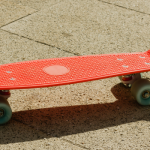Skateboard bearings are a crucial component of any skateboard, playing a pivotal role in ensuring smooth and efficient motion.
While some skateboarders debate whether bearings need a break-in period, understanding the dynamics of skateboard bearings can shed light on the topic.
In this article, we’ll explore the structure of skateboard bearings, the factors influencing their performance, and whether a break-in period is necessary.
The Anatomy of Skateboard Bearings:
Skateboard bearings are typically small, circular devices composed of several key elements:
- Ball Bearings: These small, typically metal spheres reduce friction between the inner and outer rings of the bearing, allowing for smooth rotation.
- Inner and Outer Rings: The rings house the ball bearings and are usually made of steel or ceramic.
- Retainer: The retainer, often made of nylon or metal, maintains proper spacing between the ball bearings.
- Shields or Seals: These components protect the ball bearings from dirt, dust, and debris, extending the life of the bearings.
The Break-In Myth:
The concept of breaking in skateboard bearings is a debated topic within the skating community. Some argue that a break-in period is necessary to optimize performance, while others believe that high-quality bearings function optimally right out of the box.
Factors Influencing Performance:
Several factors contribute to the performance of skateboard bearings, and understanding these can help clarify the need for a break-in period:
- Lubrication: Bearings come pre-lubricated, but the type and amount of lubricant can affect performance. Some skateboarders prefer certain lubricants for specific conditions.
- Quality of Bearings: High-quality bearings may not require a break-in period as they are precision-engineered for optimal performance from the start.
- Type of Riding: Different skateboarding styles (street, vert, downhill) and terrain conditions can impact the wear and tear on bearings.
Breaking It Down:
- Initial Spin Test: Bearings should be free-spinning right out of the box. If they feel gritty or do not spin well initially, it may indicate a defect or insufficient lubrication.
- Riding Experience: Many skateboarders argue that the best way to break in bearings is to use them regularly. The friction generated during rides can help distribute lubricant evenly.
- Cleaning and Maintenance: Regular cleaning and proper maintenance, such as adding lubrication when needed, are essential for prolonging the life of skateboard bearings.
Conclusion:
While the concept of breaking in skateboard bearings is not universally agreed upon, the key lies in understanding the individual components, their quality, and the conditions under which they are used.
High-quality bearings may not require a formal break-in process, but regular use, proper maintenance, and occasional lubrication are essential for optimal performance and longevity.
Ultimately, the best way to determine whether a break-in period is needed is through personal experience and observation of the bearings’ performance over time.
![Why do skateboarders hate scooters? [Reasons + Tips] Why do skateboarders hate scooters? [Reasons + Tips]](https://bedoper.site/wp-content/uploads/2023/04/Why-do-skateboarders-hate-scooters-150x150.png)


![How fast do skateboards go downhill? [90 mph (145 km/h)] How fast do skateboards go downhill? [90 mph (145 km/h)]](https://bedoper.site/wp-content/uploads/2023/04/How-fast-do-skateboards-go-downhill-150x150.png)
